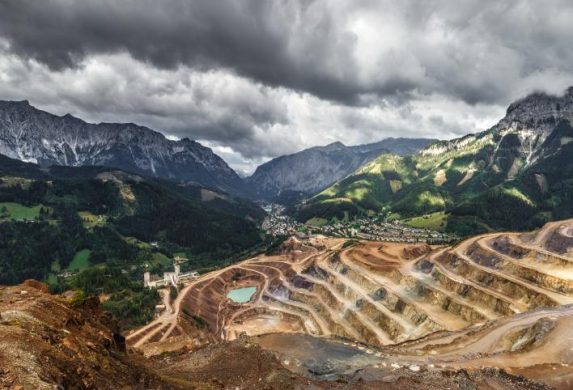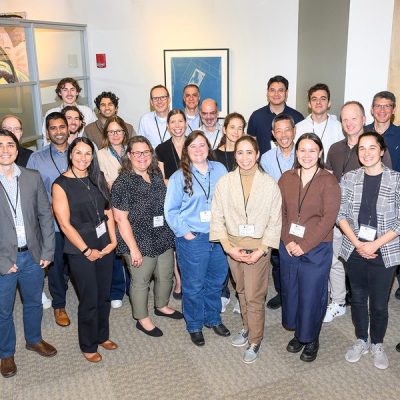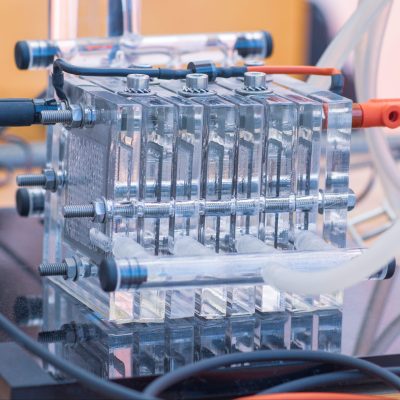Mining’s key role in the energy transition is focus of MIT conference

Mining will play an important role in the world’s transition from fossil fuels to renewable forms of energy because the technologies involved will require huge amounts of minerals, especially metals. How will the world meet that increasing demand while minimizing environmental and social impacts? That was the theme of the MIT Conference on Mining, Environment, and Society held in early September.
The conference, organized by MIT’s Environmental Solutions Initiative, included six panels on everything from producing minerals sustainably to community relations and mining.
“Our low carbon future is minerals intensive, and this creates some really fundamental tensions and tradeoffs that require systems-based, scalable and cross-disciplinary solutions,” said Elsa Olivetti, moderator of a panel discussion on innovation for a circular mining economy, or how recycling and reuse can be integrated into mining. Olivetti, an expert on improving the environmental and economic sustainability of materials, is the Esther and Harold E. Edgerton associate professor in materials science and engineering.
A second panel on critical minerals and sustainability was led by Antoine Allanore, an associate professor of metallurgy in the Department of Materials Science and Engineering and an expert on sustainable metals and minerals processing.
Olivetti and Allanore are also affiliated with the Materials Research Laboratory.
A key conclusion from both of their panels: solutions must involve collaborations across many sectors, including governments, industry, environmentalists, and community activists. “I think we have to innovate…in the ways that companies and other stakeholders interact and relate to each other, and think together of common concerns,” said Natascha Nunes da Cunha, lead mining specialist at the Inter-American Development Bank and a participant in the Allanore panel.
More minerals
Panelists put the enormity of our upcoming need for more minerals and metals in perspective with a few key statistics. For example, Nunes da Cunha noted that a low-carbon economy will require doubling the global production of minerals such as copper, zinc, and lithium, while the production of certain rare earth metals will need to grow sixfold. In addition, Allanore noted that these materials must also be of an unprecedented purity.
Daniel Litvin, a participant in the Allanore panel, said that “over 300 significant new mines will need to be developed by 2035 to supply enough graphite, nickel, lithium and cobalt for electric vehicle batteries.” Litvin is senior advisor to the Executive Committee of Environmental Resources Management.
Two enormous challenges
Litvin went on to cite “two enormous challenges” related to critical minerals and sustainability. “Challenge number one is that the energy transition is slowed down, maybe even grinds to a halt, because supply is unable to keep up with demand.” There are many reasons for this, he said, including social and political opposition to new mines. “Permitting of a significant new mine can take five to 10 years; in some cases, it can take 20 years. These are timescales that don’t…fit with the rapid need for these critical minerals.” Challenge number two, he said, is the potential negative social and environmental consequences of increased critical mineral production.
Litvin noted that “there are lots of solutions being promulgated to tackle both of these problems, but to my mind they’re not sufficiently ambitious nor sufficiently joined up.”
That said, Litvin, Nunes da Cunha, and their co-panelist Jim Wormington noted that many stakeholders are well aware of these problems and are working to address them. For example, “the mining industry is much more willing to acknowledge that it has a long track record of abuses and that that shouldn’t be part of the future of the [energy] transition,” said Wormington, a senior researcher and advocate in the Economic Justice and Rights Division of Human Rights Watch.
The circular mining economy
Eléonore Lèbre, a participant in the Olivetti panel, noted that some of the minerals we will need could come from re-mining old mines or even processing wastes from those mines. “There is an opportunity for recovering metals and minerals that were overlooked in previous [mining] operations,” said Lebre, a research fellow at the University of Queensland’s Centre for Social Responsibility in Mining. Among other positives, this could be good for “countries that rely on mining revenues heavily and don’t necessarily have opportunities to implement the circular economy in other sectors.”
She warned, however, that that “we must be very careful that reprocessing of material is not done at the expense of mine rehabilitation. Because these two activities can actually be quite conflicting, because to rehabilitate means you need to cover up the material that you may want to reprocess.”
Saleem Ali, also on the Olivetti panel, said that mining wastes, or tailings, represent a major opportunity for the circular mining economy. Many tailings could be easily processed with new technologies such as phytomining, in which plants are used to accumulate high concentrations of metals. Ali, the Blue and Gold Distinguished Professor of Energy and the Environment at the University of Delaware, began his presentation with a diagram comparing the amount of global tailings to a map of Manhattan.
Andreas Exner of the Center of Sustainable Transformation at the University of Graz concluded the Olivetti panel by saying, “I think that many of the issues that we have been discussing point towards the need of even more discussions and that is actually what democracy is all about.”

